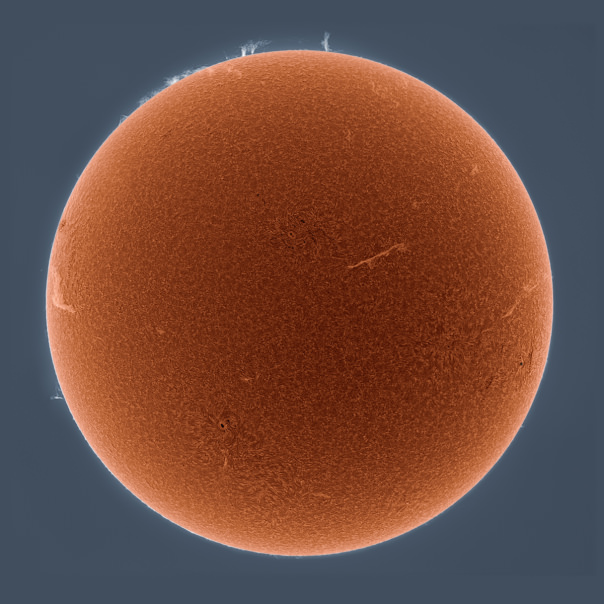Video poster frame shows Alan Friedman’s 90mm hydrogen alpha telescope setup — nicknamed “Little Big Man” — on an Astro-Physics 900 equatorial mount.
We’ve featured several beautiful images of the Sun here on Universe Today, captured by the talented Alan Friedman from his backyard telescope in Buffalo, NY. While photos of the Sun in and of themselves are nothing new in astronomy, Alan’s images always seem to bring out the best in our home star. Maybe it’s the magical nature of hydrogen alpha photography, maybe it’s Alan’s fancy new Grasshopper CCD camera, maybe the Sun’s photosphere was looking particularly nice on those days… but most likely Alan just has an innate skill for solar photography (as well as one for picking out great hats!)
In the video above, Alan talks to an audience at a TEDx event in Buffalo on October 9, sharing some of his photos and explaining why he does what he does, and why he feels do-it-yourself astrophotography is such a valuable thing to share with others. It’s a great bit of insight from a talented artist (and you just might recognize the names he drops at 13:55!)
I was happy to share one of Alan’s images on my own website back in 2010, which Phil Plait (the “Bad Astronomer,” who was then with Discover Magazine) picked up on and soon enough the whole thing got Alan quite a bit of attention. Which, when you’re an astrophotographer and graphic artist (he also sells art prints of his work as well as runs a greeting card studio) is never a bad thing.
Image of the Sun in hydrogen alpha. ©2010 Alan Friedman. All rights reserved. Used with permission.
You can see more of Alan’s work on his Averted Imagination blog and website and, on occasion, here on Universe Today!


oTay… I’m inspired and headed to the garage to pull out my sun spot scope! Looks like there’s a moment of sunshine between clouds!
Wow!. Was amazed to learn that a common traffic surveillance grade camera can be used with such success in backyard Astronomy applications.
Newbie Question: Has “Lucky Imaging” evolved to the point where software can automatically detect and discard the 90% of images that are blurry rejects or is that more of a manual selection process?
Google “Image selection method using Registax” & check out the tutorials? Registax is free!
Lottsa widely spaced spots! with the 2 sunspot equatorial bands almost at the pole and on the equator! ?